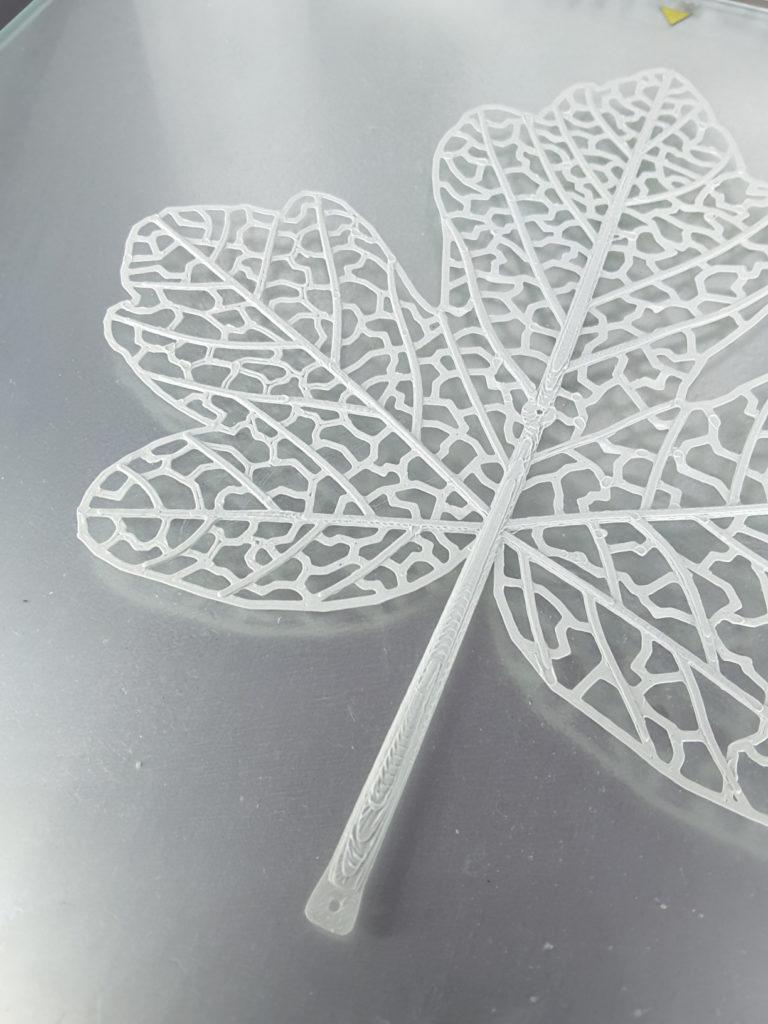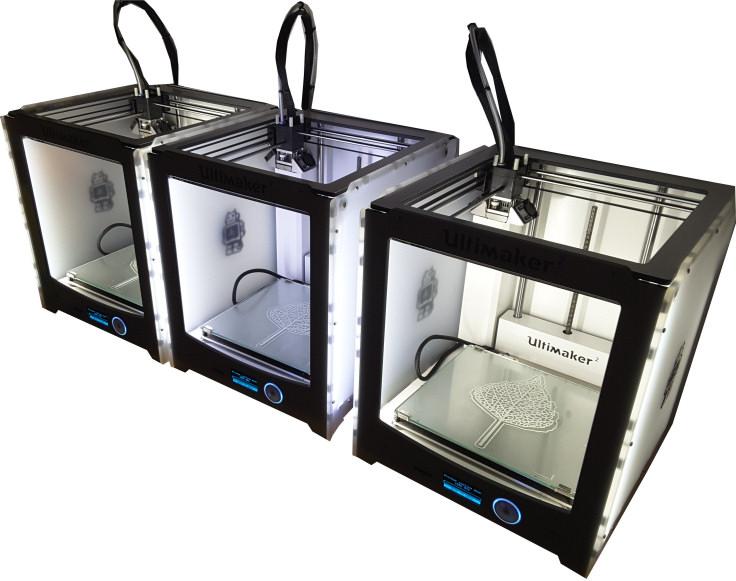3D Printed Floating Christmas Tree Made from Recycled Plastic Highlights the Beauty and Fragility of Nature
Sadly, I am lacking in the funds to hop on a plane to England at the moment, so I’ll just have to stare at pictures and drool over the menus. If you’re in or near London, however, now’s the time to go, because a gorgeous art installation just opened at aqua shard for Christmas. “Human Nature” is a Christmas tree unlike any you’ve ever seen before. At first glance, it appears to be composed of a flock of luminous butterflies floating over the dining area. In actuality, it’s made from thousands of 3D printed leaves.
The tree was designed by Timothy Hatton Architects and is not only visually beautiful but carries a beautiful message about nature and conservation of the Earth – appropriately, as it was created in conjunction with the 90th birthday of Mr. Planet Earth himself, Sir David Attenborough, who was involved with the design of the installation from start to finish. The nine-meter (nearly 30 feet)-high tree is composed of 3D printed leaves representing five native English tree species: English oak, silver birch, dogwood, wych elm, and field maple, all of which are currently threatened by pests and disease.
The 3,000 intricate leaves were 3D printed by Sheffield startup ObjectForm, which was recognized by the Plastics Industry last year for its eco-friendly, 100% recycled filament, Fila-Cycle. Made from the plastic in household objects such as refrigerators, electronics, plastic bottles and food packaging, Fila-Cycle, which was first introduced in 2014, was the perfect material for not only printing the installation in a sustainable way, but for drawing public attention to the piles of waste we generate on a daily basis, and the damage it does to the ecosystem.“As species and ecosystems are lost, so the rich tapestry of life unravels before our very eyes,” said Attenborough. “Timothy Hatton’s installation at aqua shard captures wonderfully the fragility of nature, the beauty found in its diversity and the need to reflect upon the impacts of our own behaviour and of our ‘throwaway’ society – particularly at this time of year. We owe so much to nature. From the food we eat and the clothes we wear to the homes we live in and even the technology we enjoy – everything depends in some way on our natural world. But our relationship with nature is not just based on material things – it is deep and profound, offering us peace and comfort even in our most difficult moments. Alas, all of this is under threat.”
The delicate leaves and twigs were 3D printed on several Ultimaker 3D printers. ObjectForm’s “mini manufacturing farm,” consisting over over 20 3D printers, was critical to getting the leaves 3D printed in a short amount of time, with zero waste. The material used was Fila-Cycle’s white rHIPS material, composed of recycled packaging and refrigerator lining.
Each leaf took about 20 minutes to print. The first prototypes were solid leaves, but ObjectForm and Timothy Hatton Architects worked together to refine the structure until they arrived at the final design: a delicate, skeletal representation of the leaves, printed at approximately 500 microns. Not only does the skeletal design make the leaves nearly weightless, it captures the structural authenticity that Attenborough wanted for the leaves.“When we first investigated 3D printing it was clear that the 3D printing industry would be technologically disruptive and would put further pressures on the environment,” commented ObjectForm co-founder Scott Knowles. “Finding environmentally friendly plastics source was key to help champion 3D printing and all it could achieve. I am delighted to have worked in collaboration with Timothy Hatton Architects to create this amazing installation for AquaShard, the end result, a stunning depiction of nature.”
“Human Nature,” which was unveiled on November 16, will be on display until January 5, or Twelfth Night. Once the installation is dismantled, the individual leaves will be sold and the proceeds given to Fauna & Flora International, a conservation charity of which Attenborough has been an active member for over 50 years. Any leftover pieces such as twigs will be recycled back into filament by ObjectForm.
“Over the course of his nearly 60 years as a member of Fauna & Flora International, Sir David Attenborough has witnessed and helped to shape some truly remarkable conservation successes,” said Mark Rose, Chief Executive at Flora & Fauna International. “We are delighted and touched that he has nominated our organisation as the beneficiary of this year’s Christmas installation, and we are grateful to aqua shard and Timothy Hatton Architects for their generosity in supporting our vital work to protect the natural world.”
Timothy Hatton Architects maintains a philosophy of environmental responsibility, prioritizing the preservation of both ecosystems and historic buildings in their work. According to Timothy Hatton himself, the firm hopes that “Human Nature” as well as their other design and construction work can open others’ eyes to the damage humans cause to the environment and the ways in which that damage can be mitigated.
“The installation references the diversity and beauty of the natural world but also its precarious fragility. Human consumption of Earth’s space and resources is one of greatest threats to the natural ecosystems on which all survival depends, including our own. Humans acquire bad habits easily. Thankfully we can be persuaded to cultivate environmentally friendly habits when we understand the catastrophic harm that our behavior is causing. Promoting this scientific understanding is one of the many ways in which FFI seeks to protect habitats,” he said.”The installation promotes the idea of re-using waste products to reduce consumption whilst simultaneously questioning our perception of the natural and the artificial. ‘Human Nature’ questions the interconnectivity of man and the natural world and the interdependent relationship between the two.”
Aqua shard created a special Christmas dessert and cocktail to reflect the theme of the installation: an apple compote with chocolate “soil” and twigs, plus almond crumble and honey ice cream, and a homemade liqueur with pine, apple, bergamot and spices mixed with rum. 50% of the proceeds from the £9 dessert and £16 cocktail will go to Fauna & Flora International.
“We are thrilled to be working with Timothy Hatton Architects to mark Sir David Attenborough’s 90th birthday year. It’s lovely for us to break with tradition and go in a different direction for our Christmas project this year,” said aqua shard General Manager John Wiltshire. “At this time of year, we like to give our support to a charity, and we hope we can highlight the extensive work that Fauna & Flora International do while raising money for them.”
If you go to aqua shard and check out the installation, be sure to document your experience on Twitter and/or Instagram with the hashtag #humannature16. That way, those of us who can’t go ourselves can live vicariously through you. Discuss in the Human Nature forum at 3DPB.com.
Subscribe to Our Email Newsletter
Stay up-to-date on all the latest news from the 3D printing industry and receive information and offers from third party vendors.
You May Also Like
3D Printing Unpeeled: New Arkema Material for HP, Saddle and Macro MEMS
A new Arkema material for MJF is said to reduce costs per part by up to 25% and have an 85% reusability ratio. HP 3D HR PA 12 S has been...
3D Printing News Briefs, January 20, 2024: FDM, LPBF, Underwater 3D Printer, Racing, & More
We’re starting off with a process certification in today’s 3D Printing News Briefs, and then moving on to research about solute trapping, laser powder bed fusion, and then moving on...
3D Printing Webinar and Event Roundup: December 3, 2023
We’ve got plenty of events and webinars coming up for you this week! Quickparts is having a Manufacturing Roadshow, America Makes is holding a Member Town Hall, Stratafest makes two...
Formnext 2023 Day Three: Slam Dunk
I’m high—high on trade show. I’ve met numerous new faces and reconnected with old friends, creating an absolutely wonderful atmosphere. The excitement is palpable over several emerging developments. The high...




































